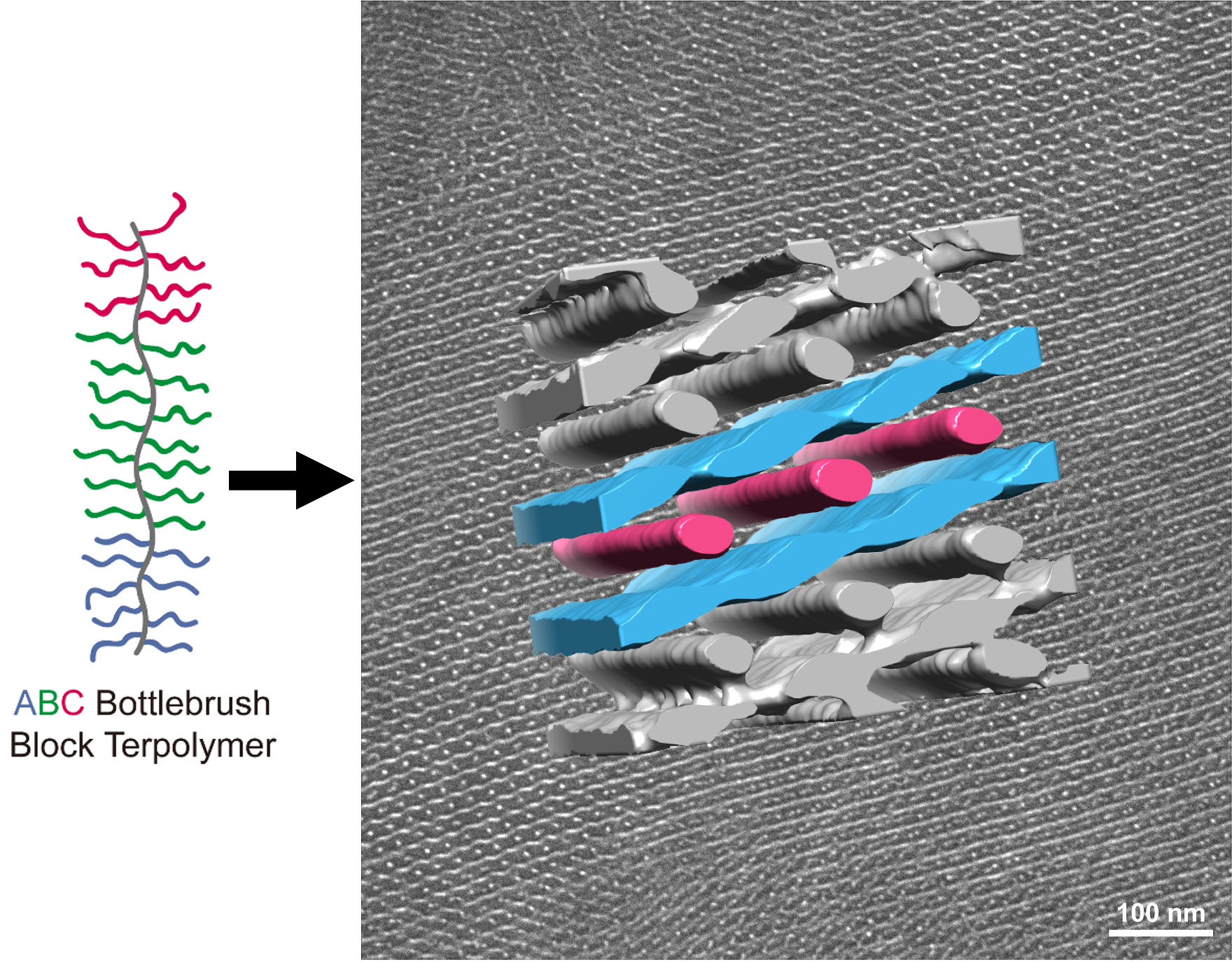 Soft materials known as molecular bottlebrush block polymers comprise a polymer backbone with densely grafted polymer side chains. These materials have attracted much attention for their ability to self-assemble into ordered structures with relatively large periodicities (over 50 nm), which are rarely achieved with simpler linear polymers. However, only self-assembly into lamellar and cylindrical phases has been reported in diblock bottlebrush materials. The absence of more complex self-assembled morphologies, which hold much potential for optical applications, may originate from the intrinsic stiffness of the bottlebrush polymer backbone.
Soft materials known as molecular bottlebrush block polymers comprise a polymer backbone with densely grafted polymer side chains. These materials have attracted much attention for their ability to self-assemble into ordered structures with relatively large periodicities (over 50 nm), which are rarely achieved with simpler linear polymers. However, only self-assembly into lamellar and cylindrical phases has been reported in diblock bottlebrush materials. The absence of more complex self-assembled morphologies, which hold much potential for optical applications, may originate from the intrinsic stiffness of the bottlebrush polymer backbone.
To address this, IRG-2 researchers investigated the phase behavior of certain non-frustrated ABC bottlebrush block terpolymers. Surprisingly, an unprecedented cylinders-in-undulating-lamellae (CUL) morphology (see figure) was discovered, across a similar range of compositions where a network phase forms in linear triblock polymers. The effects of polymer dispersity on the CUL stability were scrutinized in collaboration with the Bio-Pacific MIP at UC Santa Barbara. This study demonstrates that stiff bottlebrush architectures with more than two blocks furnish exciting opportunities for the development of new materials with attractive nanoscale morphologies, and thus application potential in various areas.